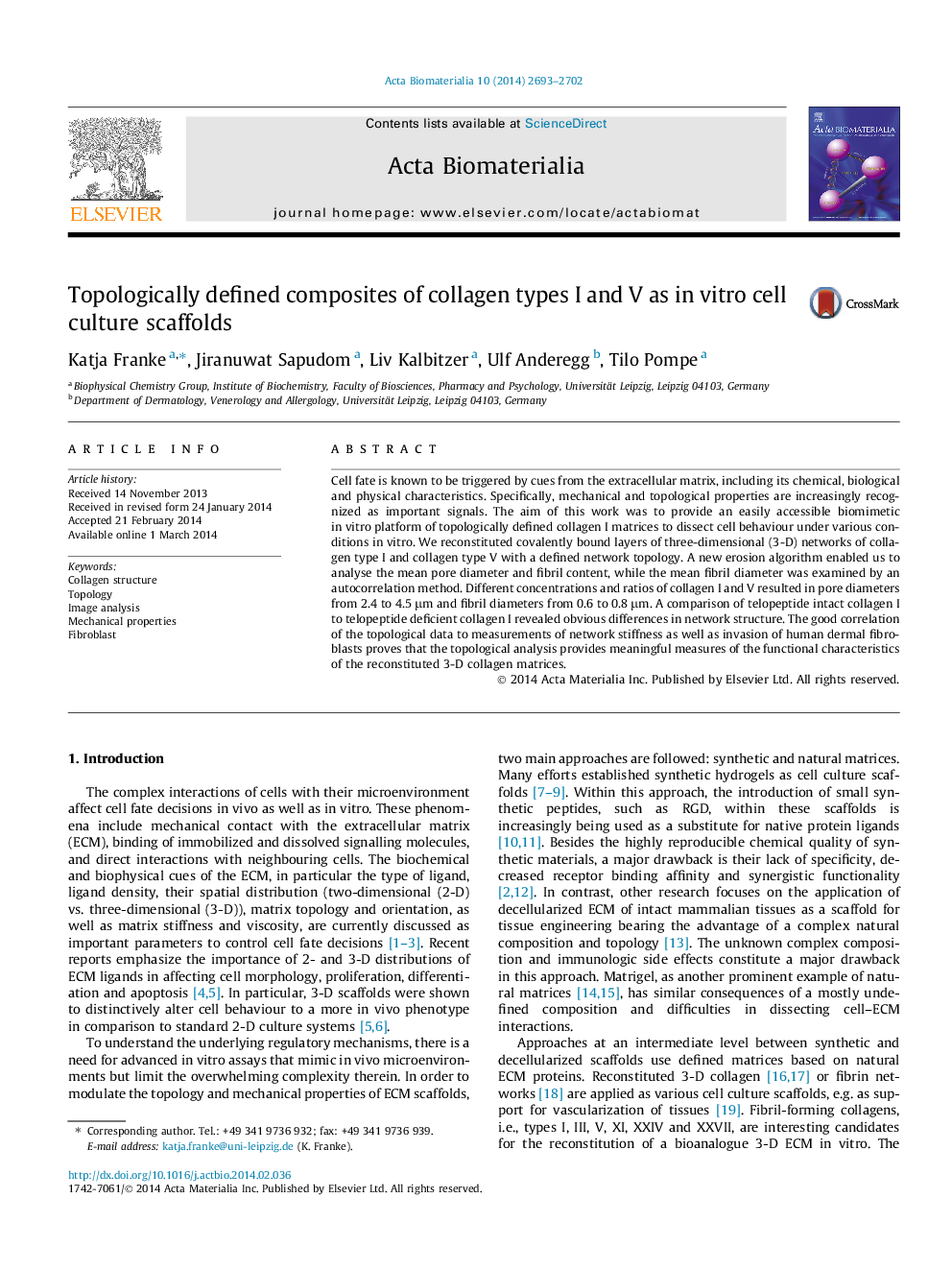| Article ID | Journal | Published Year | Pages | File Type |
|---|---|---|---|---|
| 10159107 | Acta Biomaterialia | 2014 | 10 Pages |
Abstract
Cell fate is known to be triggered by cues from the extracellular matrix, including its chemical, biological and physical characteristics. Specifically, mechanical and topological properties are increasingly recognized as important signals. The aim of this work was to provide an easily accessible biomimetic in vitro platform of topologically defined collagen I matrices to dissect cell behaviour under various conditions in vitro. We reconstituted covalently bound layers of three-dimensional (3-D) networks of collagen type I and collagen type V with a defined network topology. A new erosion algorithm enabled us to analyse the mean pore diameter and fibril content, while the mean fibril diameter was examined by an autocorrelation method. Different concentrations and ratios of collagen I and V resulted in pore diameters from 2.4 to 4.5 μm and fibril diameters from 0.6 to 0.8 μm. A comparison of telopeptide intact collagen I to telopeptide deficient collagen I revealed obvious differences in network structure. The good correlation of the topological data to measurements of network stiffness as well as invasion of human dermal fibroblasts proves that the topological analysis provides meaningful measures of the functional characteristics of the reconstituted 3-D collagen matrices.
Related Topics
Physical Sciences and Engineering
Chemical Engineering
Bioengineering
Authors
Katja Franke, Jiranuwat Sapudom, Liv Kalbitzer, Ulf Anderegg, Tilo Pompe,
